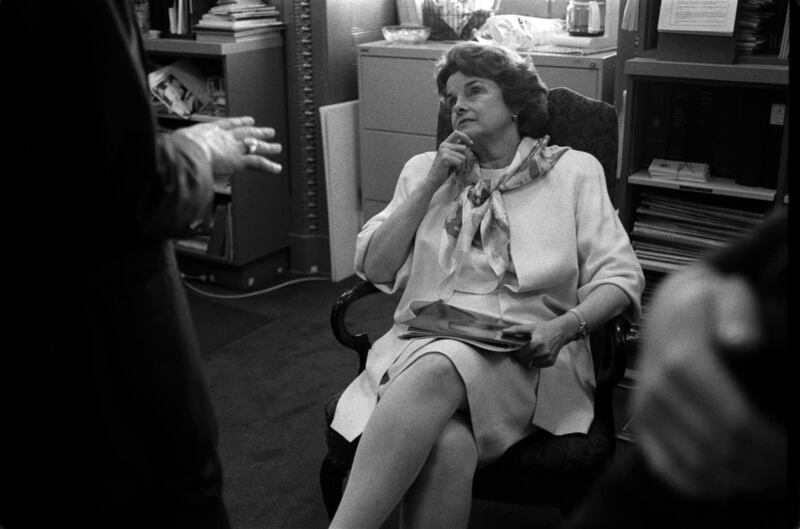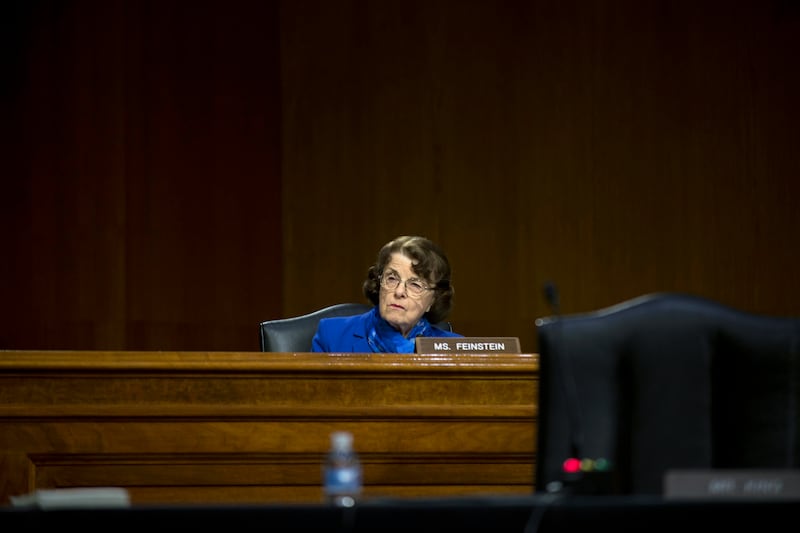Born: June 22nd, 1933
Died: September 28th, 2023
The US senator Dianne Feinstein, who has died aged 90, was long cherished by the CIA and others in the defence and intelligence community as someone whose staunch support they could rely on. Until one day they could not: on March 11th, 2009, she launched an investigation into the CIA’s torture of detainees post-9/11.
That investigation by the Senate intelligence committee, which she chaired, turned into a bitter struggle with the agency. She did not buckle and finally, in December 2014, she published her report, revealing the scale and brutality of what the CIA had done, and its repeated attempts to mislead Congress and the White House. The report found the torture had proved counterproductive in obtaining valuable intelligence.
Eric Adams, the New York mayor at the heart of Donald Trump’s attempt to reshape US justice department
Thanks to Trump, Saudi Arabia gets a big week in international diplomacy
Polls indicate German federal election will return Merkel-style coalition
Denis Staunton: As Europe wrings its hands at the US, the rest of the world may be organising
Her fight was dramatic enough to interest Hollywood, and the film The Report was released in 2019, with Feinstein played by Annette Bening.
[ Dianne Feinstein broke into Washington boys’ club as a trailblazing senatorOpens in new window ]
What made her fight with the CIA so surprising was that it was out of kilter with her career before and after, as a Senate hawk. She voted for wars in Iraq and Afghanistan – though she later expressed regret over the former.
Her reputation as a hawk frequently put her at odds with the Democratic left, and this disillusionment with her grew rapidly in the latter part of her career. In February this year, facing calls to stand down as her physical and mental health declined, she said she would not seek re-election in 2024.

There was much in her life she could look back on with pride: being a trailblazer for women in politics; the calm leadership she displayed as mayor in San Francisco after the killings of her predecessor George Moscone and Harvey Milk, the first openly gay man to be elected to an official position in the US; and her success, albeit limited, in getting gun control through the US senate in 1994. But the torture report was the achievement of which she was most proud.
The first she heard of the torture was in September 2006, when Feinstein and other members of the intelligence committee were privately briefed by the then head of the CIA, Michael Hayden. Although Hayden played down what the CIA euphemistically described as “enhanced interrogation techniques”, Feinstein was troubled by what she heard.
In 1978, dispirited by the combination of the mayoral defeats and being targeted, she told a reporter she was on the verge of quitting politics
When she became chair of the intelligence committee in 2009 – its first female head – she launched the investigation. The final 6,700-page report remains classified, but she published a 500-page executive summary which was damning enough.
Between 2002 and 2008 the CIA had detained 119 men at “black sites” – secret locations around the world – and of these, 39 had been subjected to waterboarding, sleep deprivation, sexual humiliation, stress positions and “rectal rehydration”.

In 2015, Feinstein worked with the Republican senator John McCain in steering through the Senate an amendment that reinforced a ban on torture. The McCain-Feinstein amendment was the kind of bipartisan consensus that Feinstein, a centrist, valued. But, as US politics became more polarised, her attempts to work with Republicans increasingly grated with fellow Democrats.
Born in San Francisco, Feinstein was the daughter of Betty (née Rosenburg), a model, and Leon Goldman, a surgeon. Her family was affluent, but she had a traumatic childhood: her mother was unstable and given to sudden rages due to an undiagnosed brain disorder.
Feinstein attended a convent school before going to Stanford University, where she graduated in 1955. She went on to secure a job on the state parole board. Although politics was overwhelmingly male-dominated, she was elected in 1969 to the 11-member San Francisco board of supervisors, basically the city and county council. Runs for mayor in 1971 and 1975 proved unsuccessful.
In 1976 she was the target of a bomb attack on her home claimed by a California-based leftwing terrorist group, the New World Liberation Front. The bomb was planted in a window flower box, but failed to go off. A few months later, another group, the Environmental Life Force, claimed responsibility for shooting out the windows of her holiday home with a BB gun.
Feinstein had her own gun and 14 others melted down and turned into a cross and given to Pope John Paul II on a visit to the Vatican
She began to carry a concealed handgun for protection. In 1978, dispirited by the combination of the mayoral defeats and being targeted, she told a reporter she was on the verge of quitting politics.
Only hours after this exchange, the mayor of San Francisco, Moscone, and Milk, a fellow supervisor, were shot dead in City Hall by a former supervisor. Feinstein was the first into Milk’s office. She told the San Francisco Chronicle in 2008: “It was one of the hardest moments, if not the hardest moment, of my life.” Checking Milk for a pulse, one of her fingers slipped into a bullet hole.
As president of the board of supervisors at the time, she was well placed to take over as mayor, becoming the first female to occupy the post. She served until 1988. With Aids rampant, she supported many initiatives to help the gay community.
Influenced by seeing the damage to Milk’s body, in 1982 she introduced a local ordinance banning most residents from owning handguns. She had her own gun and 14 others melted down and turned into a cross and given to Pope John Paul II on a visit to the Vatican.
After an unsuccessful bid to become governor of California in 1990, she was elected as a US senator from California in 1992.
She was ranked in 2018 as the second wealthiest senator, with her fortune estimated at about $88 million.
Feinstein married three times: Jack Berman in 1956, with whom she had a daughter, Katherine, divorcing in 1959; Bertram Feinstein in 1962, until his death in 1978; and Richard Blum, from 1980 to his death in 2022. She is survived by Katherine, three stepdaughters, and a granddaughter, Eileen. – Guardian













